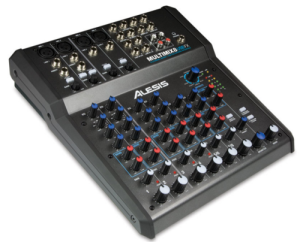Before we dive into the reasons to use JPA, let me quickly explain what it is. The Java Persistence API (JPA) is a specification for object-relational mapping in Java. As for most standards within the Java Community Process, it is implemented by different frameworks. The most popular one is Hibernate.
All JPA implementations support the features defined by the specification and often extend that with custom functionality. This provides 2 main advantages:
- You can quickly switch your JPA implementation, as long as you’re not using any proprietary features.
- The different implementations can add additional features to innovate faster than the standard. Some of them might become part of the specification at a later point in time.
OK, enough theory. Let’s start with a short introduction to JPA and then have a look at some reasons to use it.
Getting Started with JPA
It’s, of course, impossible to explain JPA in all its depth in just one short section. But I want to show you a basic use case to make you familiar with the general concepts.
Lets begin with the persistence.xml file. Its structure is defined by the JPA standard and it provides the configuration to the persistence provider, first and foremost the database driver and connection information. You can see a simple example configuration in the following code snippet.
<?xml version="1.0" encoding="UTF-8" standalone="yes"?>
<persistence xmlns="http://xmlns.jcp.org/xml/ns/persistence" xmlns:xsi="https://www.w3.org/2001/XMLSchema-instance" version="2.1" xsi:schemaLocation="http://xmlns.jcp.org/xml/ns/persistence http://xmlns.jcp.org/xml/ns/persistence/persistence_2_1.xsd">
<persistence-unit name="my-persistence-unit">
<description>My Persistence Unit</description>
<provider>org.hibernate.jpa.HibernatePersistenceProvider</provider>
<exclude-unlisted-classes>false</exclude-unlisted-classes>
<properties>
<property name="hibernate.dialect" value="org.hibernate.dialect.PostgreSQLDialect" />
<property name="hibernate.generate_statistics" value="true" />
<property name="javax.persistence.jdbc.driver" value="org.postgresql.Driver" />
<property name="javax.persistence.jdbc.url" value="jdbc:postgresql://localhost:5432/test" />
<property name="javax.persistence.jdbc.user" value="postgres" />
<property name="javax.persistence.jdbc.password" value="postgres" />
</properties>
</persistence-unit>
</persistence>
After you have configured your persistence provider, you can define your first entity. The following code snippet shows an example of a simple entity mapping.
@Entity
public class Author {
@Id
@GeneratedValue(strategy = GenerationType.AUTO)
@Column(name = "id", updatable = false, nullable = false)
private Long id;
@Version
@Column(name = "version")
private int version;
@Column
private String firstName;
@Column
private String lastName;
@ManyToMany(mappedBy="authors")
private Set<Book> books = new HashSet<Book>();
// constructors, getters/setters,
// and everything else is as usual
}
The @Entity annotation defines the Author class as an entity. It gets mapped to a table with the same name, in this case the author table.
The id attribute is the primary key of the entity and database table. The JPA implementation automatically generates the primary key value and uses the version attribute for optimistic locking to avoid concurrent updates of the same database record.
The @Column annotation specifies that this attribute is mapped to a database column. Similar to the @Entity annotation, it uses the name of the attribute as the default column name.
The @ManyToMany annotation defines a relationship to another entity. In this example, it defines the relationship to the Book entity which is mapped to another database table.
As you can see, you only need to add a few annotations to map a database table and use other features like optimistic locking and primary key generation.

5 Reasons
1. Developer Productivity
Developer productivity is probably the most often referenced advantage of JPA and any of its implementations. The main reason for that is that you have to define the mapping between the database tables and your domain model only once to use it for all write and most of your read operations. On top of that, you get a lot of additional features that you otherwise would need to implement yourself, like primary key generation, concurrency management, and different performance optimizations.
But that’s only one of the reasons why JPA is popular for its developer productivity. It also provides a simple but very efficient API to implement basic CRUD operations. You can see an example for that in the following 2 code snippets.
In the first one, I show you how to persist a new Author entity in the database.
EntityManager em = emf.createEntityManager();
em.getTransaction().begin();
Author a = new Author();
a.setFirstName("John");
a.setLastName("Doe");
em.persist(a);
em.getTransaction().commit();
em.close();
As you can see, there isn’t much you need to do. The first and last 2 lines in this example are boilerplate code, which you need to run only once for each transaction to get an EntityManager and handle the transaction. If you’re using JPA within a Java EE container or a Spring application, you can ignore these lines because your framework takes care of it.
The main work is done in the lines 4-7. I create a new object of the Author entity and call the setter methods to provide the first and last name of the new author. Then I call the persist method on the EntityManager interface, which tells the JPA implementation to generate an SQL INSERT statement and send it to the database.
The code of the next example looks similar. This time, I want to update an existing author. As in the previous example, the first and last 2 lines of the snippet are boilerplate code to get an EntityManager and handle the transaction. The interesting part of this snippets are the lines 4 and 5. In line 4, I use the find method of the EntityManager to get an entity by its primary key. As you can see, I don’t need to write any SQL for this simple query. And it’s the same for the update of the last name. You just need to call the setter methods of the attributes you want to change and your JPA implementation creates the required SQL UPDATE statement for it.
EntityManager em = emf.createEntityManager();
em.getTransaction().begin();
Author a = em.find(Author.class, 1L);
a.setLastName("new last name");
em.getTransaction().commit();
em.close();
As you’ve seen, JPA provides an easy to use API to implement common CRUD use cases without writing any SQL. That makes the implementation of common use cases a lot faster, but it also provides another benefit: Your SQL statements are not spread all over your code. That means that you can easily rename database tables or columns. The only things you need to adapt are the annotations on your entity.
2. Database Independent
If you try to use the same code with different databases, you quickly run into issues caused by different SQL dialects. SQL is the standard language to interact with a database, but each database uses a slightly different dialect. This becomes a huge issue if your statements have to run on different databases.
But not if you’re using JPA. It provides a database independent abstraction on top of SQL. As long as you’re not using any native queries, you don’t have to worry about database portability. Your JPA implementation adapts the generated SQL statements in each API call or JPQL query to the specific database dialect and handles the different database-specific data types.
3. Type and Parameter Handling
Because JDBC and Java data types do not line up perfectly, you’d have to find the right combinations and make sure to provide them as query parameters.
If you have never done this yourself, it might sound easy. But if you had to do it at least once, you know that it’s easy to get it wrong. Worse, it distracts from implementing the business logic and it’s also the cause of SQL injection vulnerabilities, one of the most common security issues in web applications.
The best way to avoid these issues and to be able to focus on the business logic is to use a framework or specification, like JPA, that handles these things automatically.
As you’ve seen at the beginning of this post, you don’t have to define any SQL data types, when you define your entity mapping. Your JPA implementation hides these transformations from your code and uses a default mapping.
The parameter handling for your JPQL queries takes a similar approach. You just set the parameter on the Query interface and your JPA implementation handles it based on the entity metadata. You can see an example of it in the following code snippet.
EntityManager em = emf.createEntityManager();
em.getTransaction().begin();
TypedQuery<Author> q = em.createQuery("SELECT a FROM Author a WHERE id = :id", Author.class);
q.setParameter("id", 1L);
Author a = q.getSingleResult();
em.getTransaction().commit();
em.close();
4. Avoid Unnecessary Queries
The write-behind optimization is one of several performance optimizations you get with JPA. The basic idea is to delay all write operations as long as possible so that multiple update statements can be combined into one. Your JPA implementation, therefore, stores all entities that were used within one transaction in the first level cache.
Due to this, the following code snippet requires only one SQL UPDATE statement, even though the entity gets changed in different methods within the application. This reduces the number of SQL statements massively, especially in complex, modularized applications.
public void updateAuthor() {
EntityManager em = emf.createEntityManager();
em.getTransaction().begin();
Author a = em.find(Author.class, 1L);
a.setFirstName("New first name");
// execute operations that need to happen
// during the transaction and between
// updating first and last name
a.setLastName("new last name");
em.getTransaction().commit();
em.close();
}
5. Caching
Caching is another performance tuning feature that you get almost for free if you use JPA. I already explained how the 1st level cache is utilized for the write-behind optimization. But that’s neither the only cache nor the only way to benefit from it. JPA defines 2 different kinds of caches:
- The first-level cache, which contains all entities used within a transaction.
- The second-level cache, which stores the entities in a session independent way.
Both caches help you to reduce the number of executed SQL statements by storing entities in local memory. This can provide huge performance improvements if you have to read the same entity multiple times within the same or multiple transactions. The best thing is that you need to do almost nothing to get these benefits.
The first-level cache is always activated and you don’t have to do anything to use it. Your JPA implementation uses it internally to improve the performance of your application.
The second-level cache needs to be activated and you can do that either for all or just for specific entities. As soon as you’ve activated the cache, your JPA implementation will use it transparently. You, therefore, don’t need to consider caching while implementing your business logic and you can activate or deactivate it at any point in time without any refactoring. I always recommend activating the second-level cache for entities that you read very often without changing them. Caching these entities provides the most performance benefits and requires just a small management overhead for the cache.
The activation of the second-level cache requires two simple steps:
- Configure the cache in your
persistence.xmlfile. - Mark an entity as cacheable.
Let’s have a look at the persistence.xml file first. The only thing you need to do to configure the second-level cache is to configure the shared-cache-mode parameter. In this example, I use the ENABLE_SELECTIVE mode, which allows me to enable caching for specific entities.
<persistence xmlns="http://xmlns.jcp.org/xml/ns/persistence" xmlns:xsi="https://www.w3.org/2001/XMLSchema-instance" version="2.1" xsi:schemaLocation="http://xmlns.jcp.org/xml/ns/persistence http://xmlns.jcp.org/xml/ns/persistence/persistence_2_1.xsd">
<persistence-unit name="my-persistence-unit">
…
<!-- enable selective 2nd level cache -->
<shared-cache-mode>ENABLE_SELECTIVE</shared-cache-mode>
…
</persistence-unit>
</persistence>
In the following code snippet, I add the @Cacheable annotation to the Author entity to activate the second-level cache for it:
@Entity
@Cacheable
public class Author {
…
}
That’s all you need to do to activate the second-level cache for a given entity and to avoid unnecessary database queries. As you’ve seen, a basic configuration in JPA requires only one configuration parameter and one annotation. But the cache itself is not defined by the JPA specification, and you might need to provide more configuration parameters for it.
Summary
In this post, I presented only a small subset of the features and benefits provided by JPA. But as you’ve seen these features cover a broad range of topics, like developer productivity, database portability and performance optimizations. JPA and Hibernate as its most popular implementation are, therefore, the most common choice to implement database access.
Do you have any questions? Feel free to post them in the comments or reach out to me on twitter.
Editor’s Note: If you liked this high-level introduction to Hibernate, stay tuned because more articles by other experts in the field are upcoming. By the way, did you know that there is an RSS feed for every tag? Here’s the one for Java in general and then one for Hibernate in particular.
Frequently Asked Questions (FAQs) about JPA and Hibernate
What are the key differences between JPA and Hibernate?
JPA (Java Persistence API) and Hibernate are both used for object-relational mapping and data persistence in Java. JPA is a specification, meaning it’s a set of rules and guidelines for implementing data persistence. Hibernate, on the other hand, is a full-fledged implementation of the JPA specification. It provides additional features beyond the standard JPA, such as caching and a criteria API for creating type-safe queries.
Why should I choose JPA over JDBC?
JPA offers several advantages over JDBC. It provides a higher level of abstraction, which means you don’t have to write as much boilerplate code. JPA also supports object-relational mapping, which allows you to work with objects and classes instead of SQL statements and result sets. This makes your code more readable and maintainable. Additionally, JPA supports caching, which can significantly improve the performance of your application.
Can I use Hibernate without JPA?
Yes, you can use Hibernate without JPA. However, doing so means you won’t be able to take advantage of some of the features provided by JPA, such as the EntityManager API and JPQL (Java Persistence Query Language). Using Hibernate with JPA allows you to write more portable and maintainable code.
What are the benefits of using JPA with Hibernate?
Using JPA with Hibernate provides several benefits. It allows you to take advantage of the features provided by both JPA and Hibernate. You can use the EntityManager API and JPQL from JPA, as well as the caching and criteria API from Hibernate. This combination provides a powerful and flexible solution for data persistence in Java.
How does JPA improve code maintainability?
JPA improves code maintainability by providing a higher level of abstraction. Instead of writing SQL statements and handling result sets, you can work with objects and classes. This makes your code more readable and easier to understand. Additionally, JPA supports object-relational mapping, which allows you to map your database tables to Java classes. This means you can change your database schema without having to change your Java code.
What is the role of the EntityManager in JPA?
The EntityManager is a key component of JPA. It’s responsible for managing entities, which are Java objects that represent rows in a database table. The EntityManager provides methods for creating, reading, updating, and deleting entities. It also manages transactions and can cache entities to improve performance.
How does caching work in JPA and Hibernate?
Both JPA and Hibernate support caching, which can significantly improve the performance of your application. Caching works by storing frequently accessed data in memory, reducing the need for expensive database operations. JPA supports first-level caching, which is associated with a single EntityManager. Hibernate supports second-level caching, which is shared across multiple sessions.
What is JPQL and how does it differ from SQL?
JPQL (Java Persistence Query Language) is a query language used in JPA. It’s similar to SQL, but instead of operating on tables and columns, JPQL operates on Java classes and attributes. This makes your queries more readable and maintainable. Additionally, JPQL supports object-oriented features, such as inheritance and polymorphism.
Can I use JPA and Hibernate with Spring?
Yes, you can use JPA and Hibernate with Spring. In fact, Spring provides excellent support for JPA and Hibernate through its Spring Data JPA project. This allows you to take advantage of the features provided by JPA and Hibernate, while also benefiting from the simplicity and flexibility of Spring.
How does JPA handle transactions?
JPA handles transactions through the EntityManager. When you start a transaction, the EntityManager begins tracking changes to entities. When you commit the transaction, the EntityManager synchronizes these changes with the database. If something goes wrong, you can roll back the transaction to undo these changes. This ensures data consistency and integrity.
 Thorben Janssen
Thorben JanssenThorben Janssen is an independent trainer with more than 15 years of experience with Hibernate. You can find more of his posts and several free cheat sheets about JPA and Hibernate on his blog or you can take his free video course about finding and fixing n+1 select issues.






